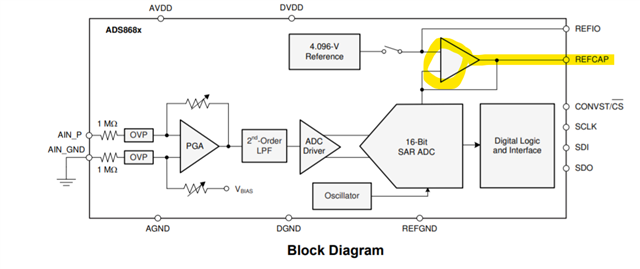Section 10.1 for layout guidelines mentions need a capacitor with ESR less that 0,2 Ohms for REFCAP pin (10uF one)
We are considering a cap with Impedance under 0.2Ω for 2kHz~2GHz .
From the layout from section 10.2 of the DS.
AVDD and DVDD should be separated, but GND should be, ideally, a solid layer, connected to device by vias, right?


